GL Enhances VoIP Radio Emulation & Analysis with Support for ED-137C
Welcome to the September 2017 issue of GL Communications' Newsletter providing information and insight into our enhanced ED-137 Radio Emulator referred to as MAPS™ ED-137 Radio Emulator.
Overview
Continuing with our efforts to improvise test tools for Air Traffic Control and Management industry, GL has enhanced MAPS™ ED-137 Radio to simulate VoIP Air-Ground calls as per EUROCAE ED-137C Volume 1 Radio version along with the existing ED137B Volume 1 Radio version. The MAPS™ ED-137 Radio simulator software provides complete control over call scenarios testing, and the ability to customize the network parameters for signaling and VoIP traffic. It has the capability of generating more than 500 simultaneous Air-Ground calls.
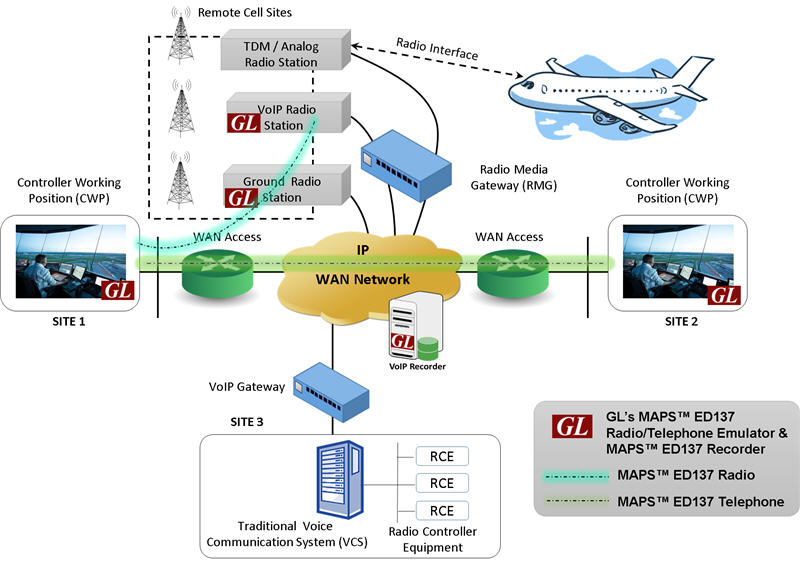
The latest release adds important new enhancements to MAPS™ ED-137 Radio Emulator as per ED137C Volume 1 Radio version. These include:
- Controller Working Positions (CWPs) and Ground Receive Station (GRS) nodes support Radio Receiver Multicast operation
- Supports selective calling with SELCAL tone transmission
- Simulates non-VoIP source PTT keying
- WG67 KEY-IN event package includes frequency id (fid) parameter to inform the User Agent about the new Frequency ID (fid)
- No disconnect of active sessions when GRS frequency id changes
- Includes PTT type - Test PTT
- All SIP requests and responses will have WG67-Version header updated to 'radio.02'
Additional enhancements to MAPS™ ED-137 Radio Emulator include:
- Supports simulation of Dynamic Delay Compensation messages - Request for Measurement Message (RMM) and Measurement Answer Message (MAM)
- Supports sending simultaneous squelch on selected multiple Radios
- Sample script provided to perform automated periodic Push-To-Talk (PTT) and Squelch (SQU) operations on Air-to-Ground (A-G) calls.
- Option to define multiple traffic profiles for simultaneous simulation of various traffic actions
- Supports sending audio using microphone and playing audio to speaker on multiple sessions
Brief Description of ED137C Features
Radio Receiver Multicast Operation
In Multicast mode operation, multiple CWPs can send request to have multicast session with GRS to receive multicast RTP packets from GRS. CWP sends an INVITE request with SDP body containing multicast group address and TTL value to GRS. The GRS which supports multicast will extract the multicast address from SDP body in INVITE and starts sending the R2S/RTP packets to this multicast address. CWPs will send Internet Group Management Protocol (IGMP) join request to join the group and start receiving the multicast RTP packets. The router or switch with multicast feature will manage the subscription to multicast group and forwards the RTP packets received from GRS to all members of the group. The image below depicts the process.
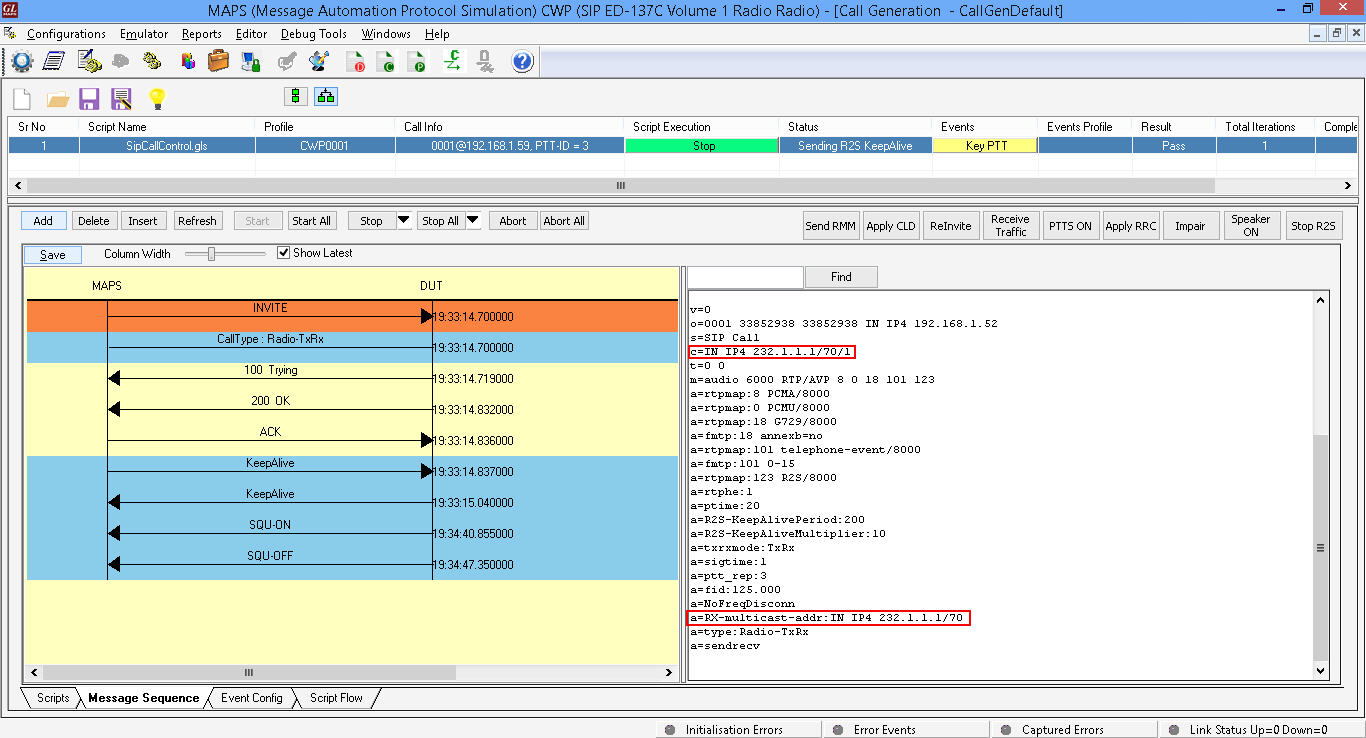
SELCAL (Selective Calling) Tone Transmission
SELCAL is a signaling method used to alert the aircraft crew members selectively to an incoming message from a ground station. The CWP endpoints simulated by MAPS™ ED-137 Radio supports sending SELCAL tones to GRS using the SIP INFO method. SELCAL tone defined in CWP profile will be sent in the body of INFO message as shown in image below. GRS replies with 200 OK message to INFO request and sends Normal PTT_ON confirmation with PTT-ID=63 in RTP downstream header to CWP.
PTT-ID=63 is reserved for SELCAL tone transmission at GRS. PTT priorities are handled at GRS as per ED137C for this transmission.
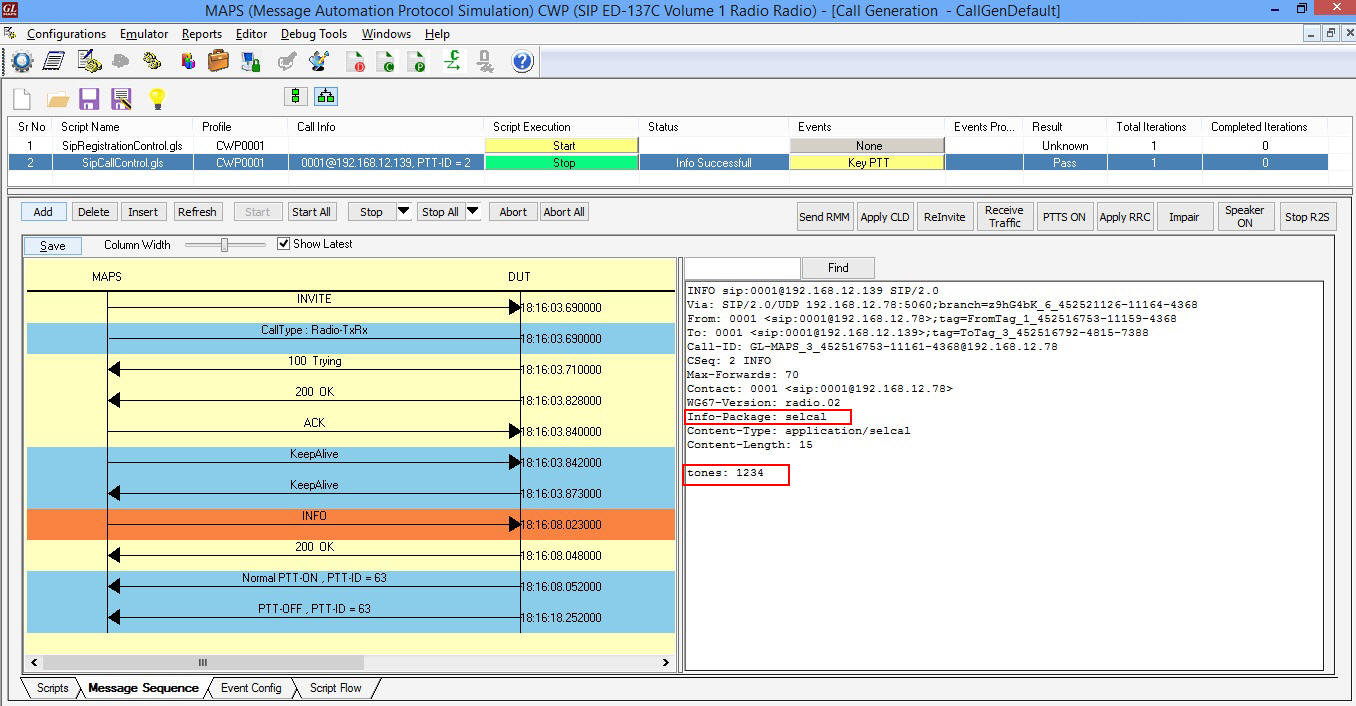
Simulates Non-VoIP Source PTT Keying
GRS endpoints simulated by MAPS™ ED-137 Radio supports simulation of non-VoIP source PTT Keying. User can simply apply “Key non-VoIP PTT” event on the selected Radio call at GRS. This will trigger GRS to send Normal PTT_ON confirmation with configured PTT-Id (60, 61 or 62) in RTP downstream header to all CWPs indicating that PTT from a non-VoIP source is being transmitted at GRS. PTT-Ids 60, 61 and 62 are reserved for non-VoIP sources. The image below shows the non-VoIP source PTT ON/OFF confirmations on the call graph.
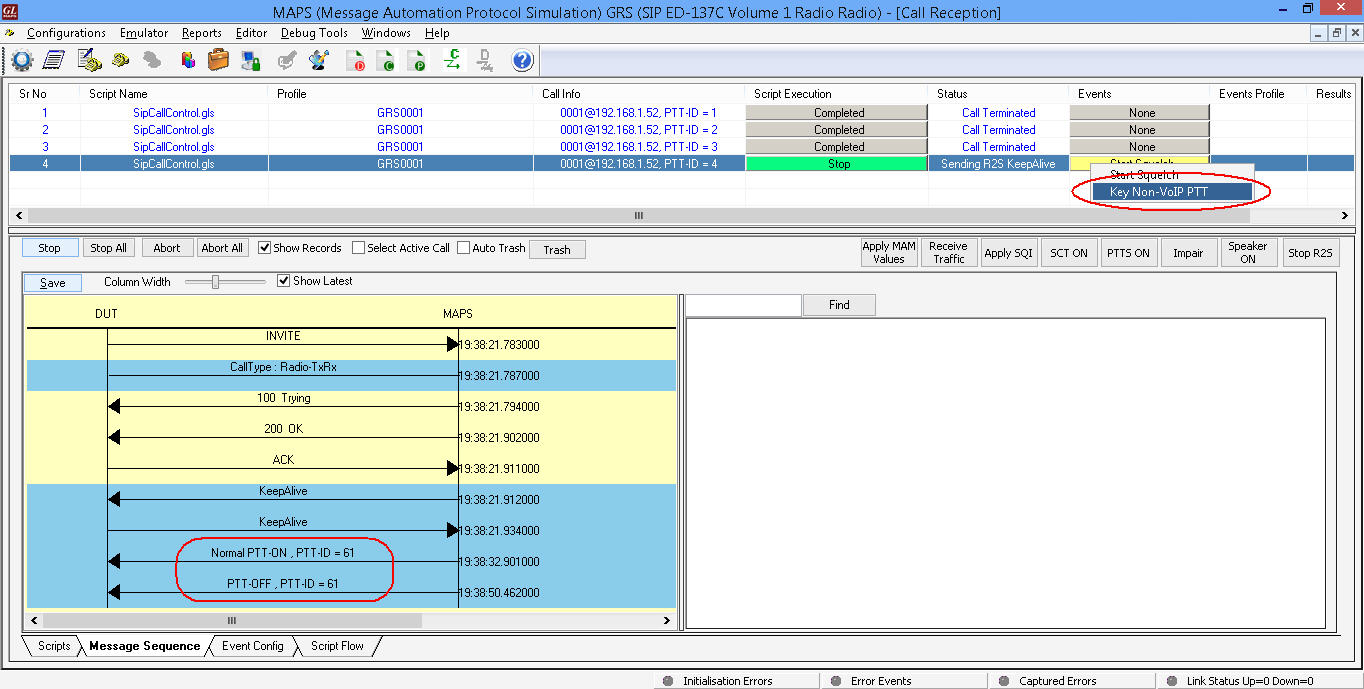
WG67 Key-In Package with Frequency Id
WG67 Key-In Package is updated to reflect the current frequency-id (fid) of the GRS. Whenever there is a change in the frequency-id, GRS sends NOTIFY message with new frequency-id to all the active CWPs. The NOTIFY message body will contain frequency-id and all active sessions information like PTT-id, SIP From URI and Call Type. The image below depicts the procedure.
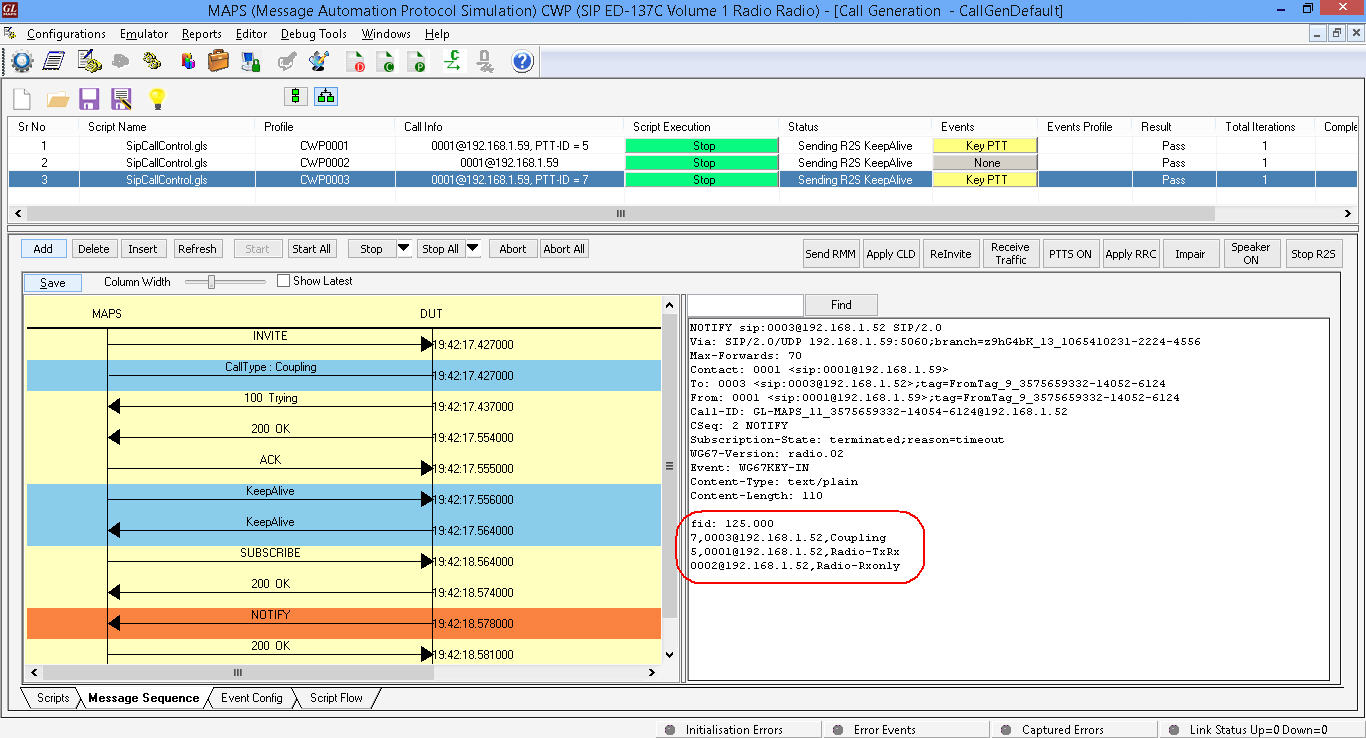
Disconnection Mode Option in SDP
CWP end points can include the disconnection mode SDP attribute (‘NoFreqDisconn’) in the SIP INVITE message to inform GRS not to terminate the session when GRS changes its frequency id. The GRS supporting this feature will retain the sessions received with this SDP attribute and terminates other sessions when frequency id changes.
Test PTT Signal Type
CWP end points support sending Test PTT signal to GRS. Test PTT has the lowest precedence among all the PTT types and GRS handles its precedence as per ED137C.
Brief Description of Other Enhancements
Simulation of Dynamic Delay Compensation Messages
Enhanced MAPS™ ED-137B Radio adds Dynamic Delay Compensation as an additional feature specific RTP extension block used to introduce varying delay values at GRS in lab environment without actually making the real-time measurements.
Once the Air-to-Ground call is established, CWP can send Dynamic Delay Compensation messages such as RMM to GRS. GRS replies with MAM. Message for each RMM received.
MAPS™ uses only relative time to calculate delay. After receiving the MAM message from GRS, delay is calculated and displayed in the message sequence graph along with RMM and MAM messages, as shown in the image below.
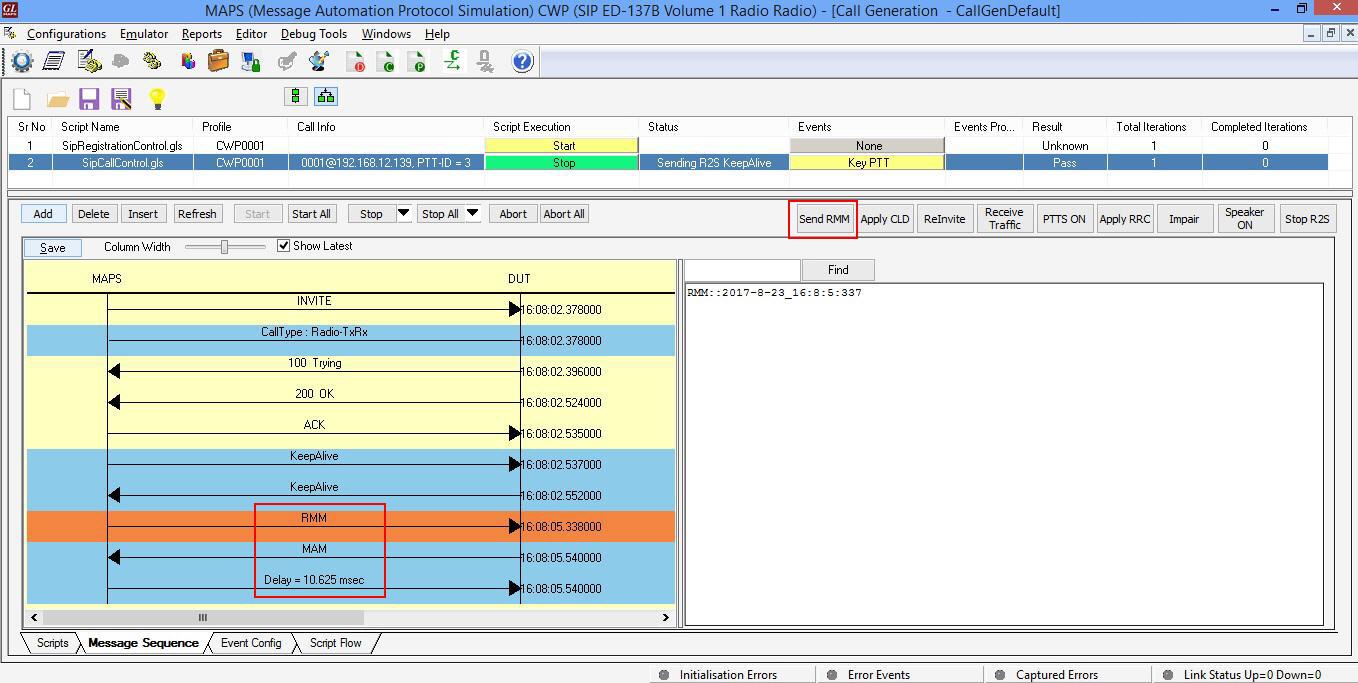
Simultaneous Squelch on All Connected Sessions of Selected Multiple Radios
Now with enhanced MAPS™ ED137B Radio, it is possible to perform squelch on multiple Radios simultaneously by selecting a session of each radio and applying "Start Squelch" event.
The image below depicts squelch on all connected sessions of Radio2 (GRS0002) and Radio3 (GRS0003).
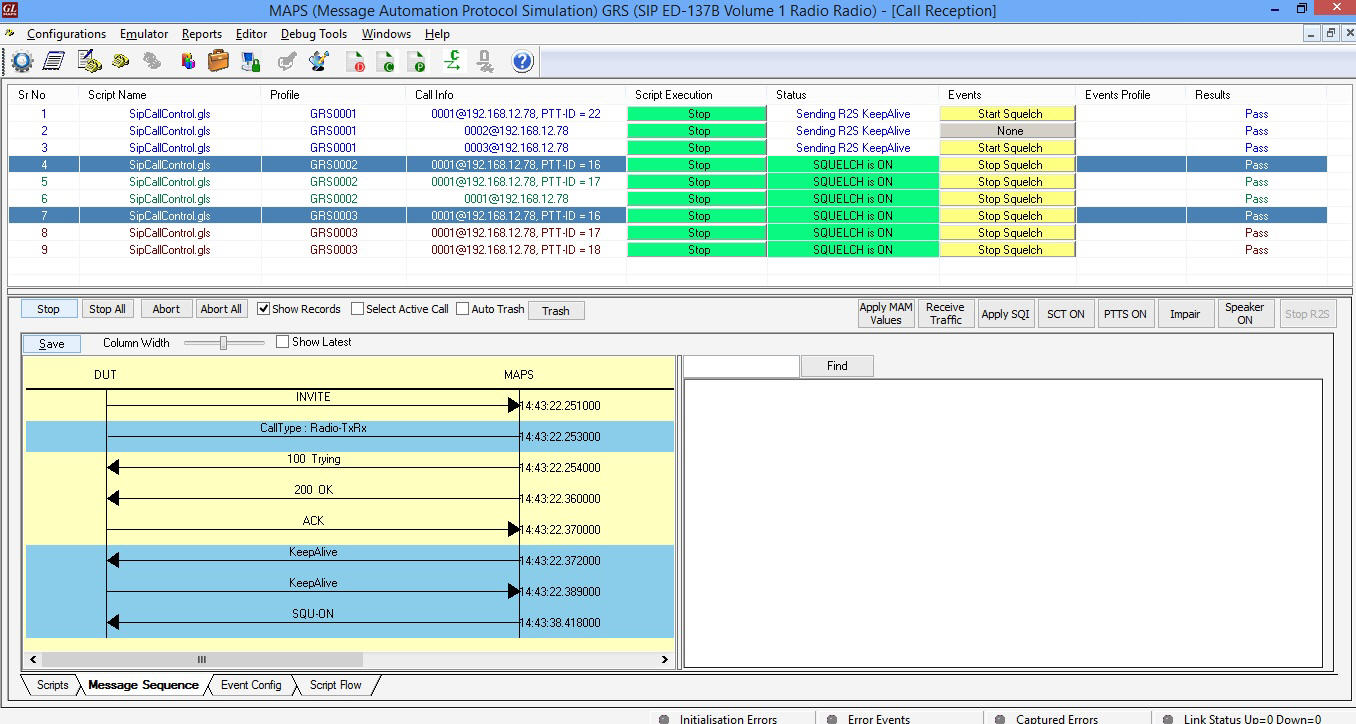
Perform Automated Periodic SQUELCH and PTT Actions
Enhanced MAPS™ ED137B Radio includes a custom scripts to perform auto SQUELCH and PTT actions on Air-to-Ground calls. The custom script ‘SipCallControl-AutoSquelch.gls’ has an initialization section (Auto Squelch Configurations), which allows user to configure parameters required to control the behaviour of auto SQUELCH. Whenever an A-G call is received, automatic squelch action is performed over the call as per the parameters configured in the script. The image below depicts the process.
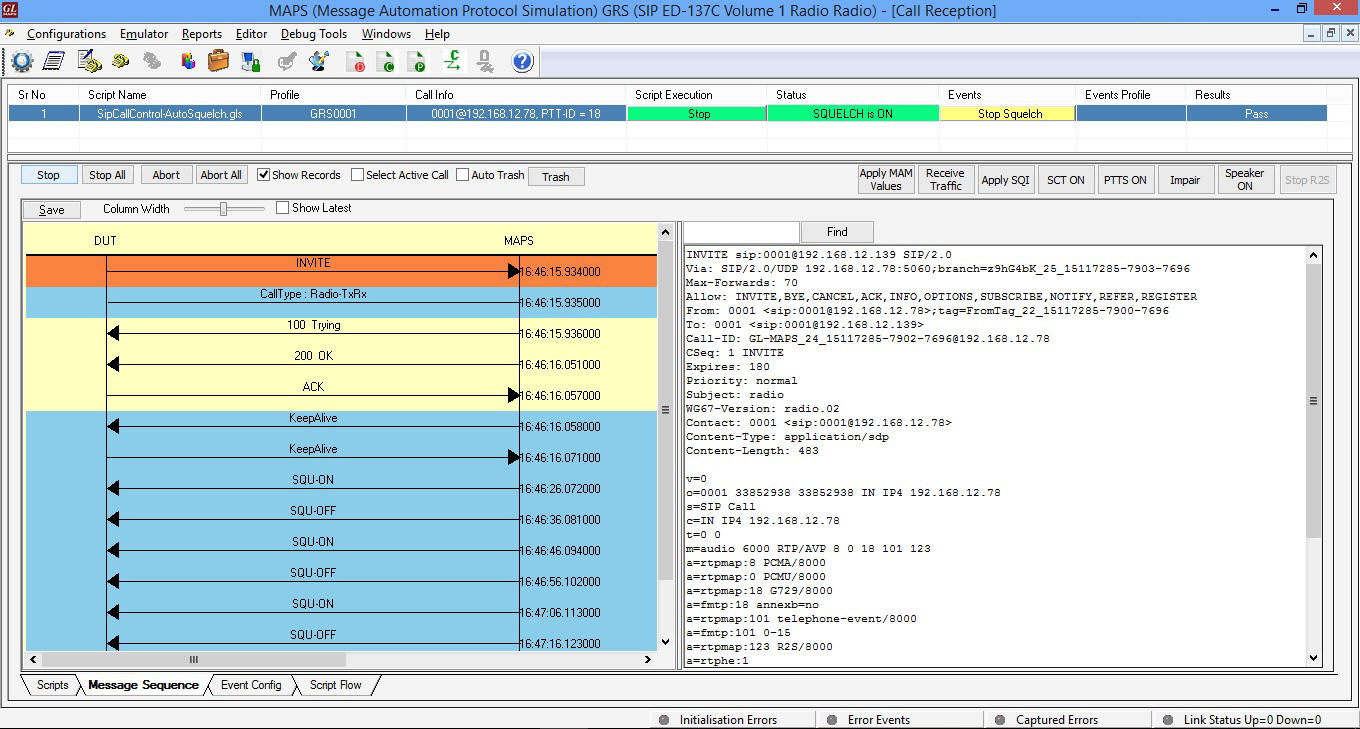
Similarly, to perform automatic periodic PTT on Air-to-Ground calls, MAPS™ ED137B Radio includes custom ‘SipCallControl-AutoPTT.gls’ script, where the parameters required to control the behaviour of auto PTT are configured in the initialization section of the script.
When MAPS™ ED-137 Radio (CWP) generates calls, the PTT action is performed automatically as per the parameters configured in the script. The calls can also be placed repetitively with “Inter-call duration” (as configured in the “Global Configurations”) till the defined iterations are reached. Periodic auto PTT action performed over the Air-to-Ground call is displayed in the message sequence graph as depicted in the image below.
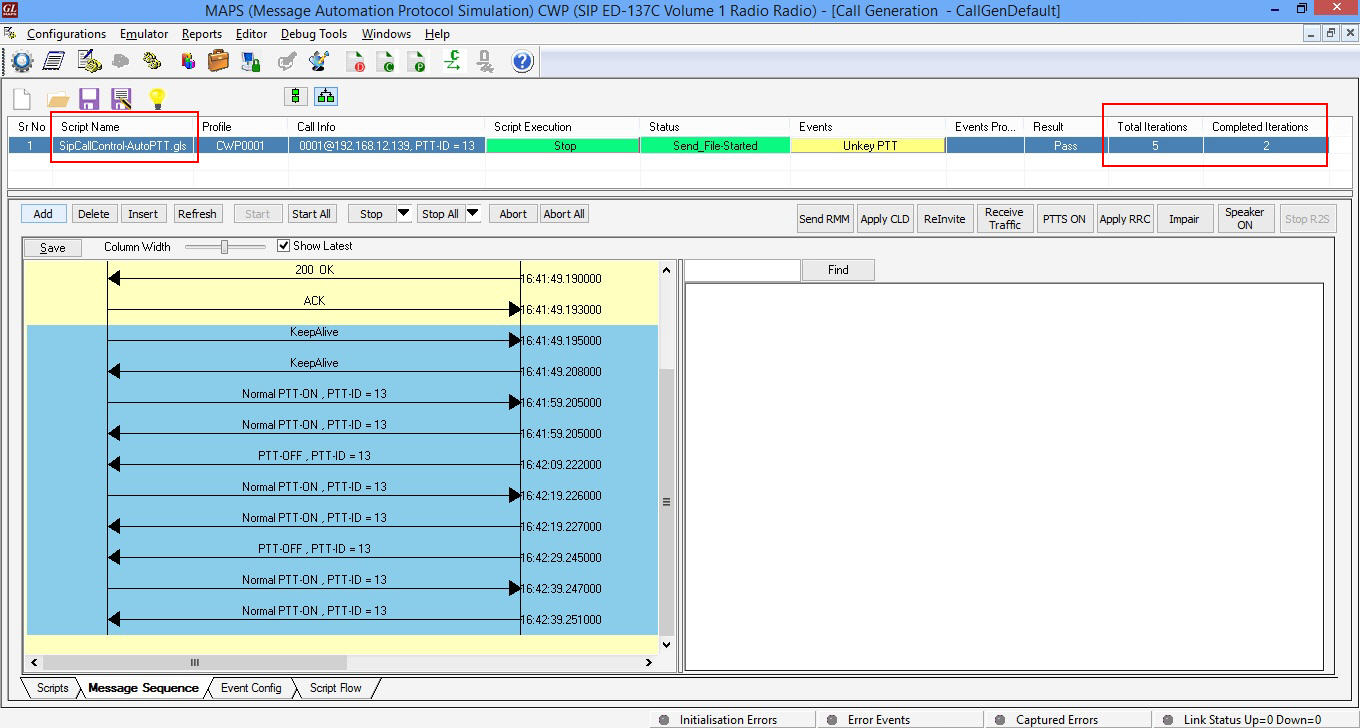
 Back to Newsletter Index Page
Back to Newsletter Index Page